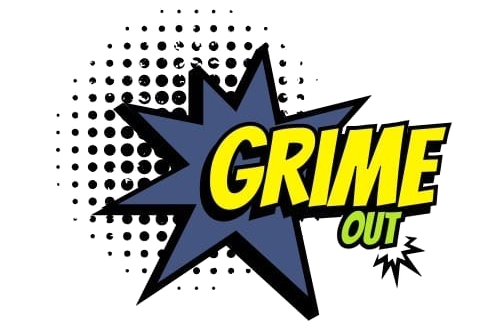Introduction
Your roof is one of the most crucial parts of your home, providing protection from the elements and enhancing your property’s curb appeal. However, over time, roofs accumulate dirt, moss, algae, lichen, and debris, which can lead to serious structural damage if left unaddressed. Regular roof cleaning not only improves the appearance of your home but also extends the lifespan of your roofing materials and prevents costly repairs.
In this comprehensive guide, we’ll explore the importance of roof cleaning, the best cleaning methods, professional vs. DIY cleaning, and essential maintenance tips to keep your roof in pristine condition.
Why Roof Cleaning is Essential
1. Enhances Curb Appeal
A clean roof significantly improves the aesthetics of your home. Stains, moss, and algae can make your home look neglected, which may impact its value if you plan to sell.
2. Extends Roof Lifespan
Dirt, algae, and moss can trap moisture, leading to rot and deterioration of roofing materials. Regular cleaning can help prevent premature aging and extend the life of your roof by several years.
3. Prevents Structural Damage
Accumulated debris, such as leaves and twigs, can clog gutters and downspouts, leading to water pooling on your roof. This can cause leaks and structural damage over time.
4. Improves Energy Efficiency
Dark stains from algae and moss can absorb heat, increasing indoor temperatures and forcing your cooling system to work harder. A clean roof reflects more sunlight, helping regulate indoor temperatures and reducing energy costs.
5. Reduces Health Risks
Mold and algae growth on roofs can spread spores into the air, potentially causing respiratory issues and allergies. Cleaning your roof eliminates these harmful contaminants.
Common Roof Contaminants
Algae
Algae, particularly Gloeocapsa magma, appear as black streaks on shingles. They thrive in humid environments and can spread rapidly if not removed.
Moss
Moss retains moisture, which can lead to roof rot and shingle damage. It often grows in shaded areas and between shingles.
Lichen
Lichen is a combination of algae and fungus, forming a crusty, hard-to-remove growth that can damage roofing materials over time.
Mold & Mildew
These fungi can cause stains and deterioration, especially in areas with high humidity and poor ventilation.
Debris
Leaves, twigs, and dirt can accumulate and clog drainage systems, leading to water damage and roof leaks.
Roof Cleaning Methods
1. Soft Washing
Soft washing is a low-pressure cleaning method that uses eco-friendly cleaning solutions to break down dirt, algae, and moss. It is ideal for delicate roofing materials such as asphalt shingles and tiles.
Pros:
- Safe for most roofing materials
- Effectively removes algae and moss
- Prevents damage caused by high-pressure washing
Cons:
- Requires specialized cleaning solutions
- May need more frequent cleaning
2. Pressure Washing
Pressure washing uses high-pressure water to remove dirt and debris. While effective for concrete and metal roofs, it is not recommended for asphalt shingles as it can strip away the protective granules.
Pros:
- Quick and effective for durable roofing materials
- Removes stubborn stains and dirt buildup
Cons:
- Can damage shingles and tiles
- Not suitable for delicate roofs
3. Manual Cleaning
This method involves using a brush or scraper to remove moss and debris manually. It is a slow but effective method, often combined with chemical treatments to prevent regrowth.
Pros:
- No risk of pressure damage
- Good for spot cleaning
Cons:
- Time-consuming
- Requires ladder work, increasing risk of injury
4. Chemical Roof Cleaning
This involves applying special roof-cleaning solutions that kill moss, algae, and mold. Biodegradable and non-toxic options are available for environmentally friendly cleaning.
Pros:
- Long-lasting results
- Prevents regrowth of moss and algae
Cons:
- Some chemicals may be harsh on the environment
- Requires careful application to avoid plant damage
DIY vs. Professional Roof Cleaning
DIY Roof Cleaning
If you have the right tools and knowledge, DIY roof cleaning can be cost-effective. However, working on a roof can be dangerous, and improper techniques can cause damage.
Essential Tools for DIY Roof Cleaning:
- Safety harness and ladder
- Soft-bristle brush or sprayer
- Eco-friendly roof cleaning solution
- Garden hose with a spray nozzle
- Protective gloves and goggles
Professional Roof Cleaning
Hiring professionals ensures a thorough and safe cleaning process. They use industry-grade equipment and solutions to clean your roof without causing damage.
Benefits of Hiring a Professional:
- Expertise in handling different roof types
- Use of specialized cleaning solutions
- Safety measures to prevent accidents
- Long-lasting results
Roof Maintenance Tips
1. Regular Inspections
Inspect your roof at least twice a year and after major storms to identify early signs of damage or contamination.
2. Clean Gutters
Clogged gutters can lead to water buildup and roof damage. Clean gutters regularly to ensure proper drainage.
3. Trim Overhanging Branches
Trees near your roof can drop leaves and provide shade for moss and algae growth. Trim branches to prevent debris accumulation.
4. Apply Preventative Treatments
Consider applying algaecide or moss inhibitors to prevent regrowth of roof contaminants.
5. Ensure Proper Ventilation
Good attic ventilation prevents moisture buildup, reducing the risk of mold and mildew growth on your roof.
Conclusion
Regular roof cleaning is a vital part of home maintenance that enhances curb appeal, extends roof longevity, and prevents costly repairs. Whether you choose DIY cleaning or hire a professional, ensuring your roof remains free from debris, moss, and algae will protect your investment and keep your home looking its best.
By following the best practices outlined in this guide, you can maintain a clean, durable, and efficient roof for years to come. If you’re unsure about tackling roof cleaning yourself, consulting a professional will ensure a safe and effective cleaning process tailored to your roof’s specific needs.
